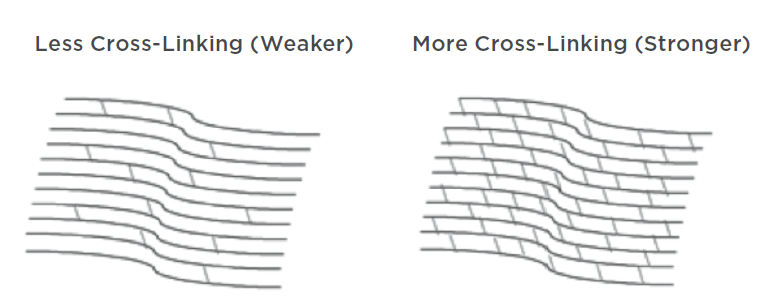Epi-Off, Epi-On, C3R – What Does It All Mean?

If you or a family member has been diagnosed with keratoconus, then you’ve probably read about corneal cross-linking as a potential treatment option. But there are several cross-linking terms and protocols that people throw around – Epi-off, Epi-on, C3R – What does it all mean? This blog post aims to define some of the most common cross-linking terms and clear up some of the confusion!
What Is Corneal Cross-Linking?
Corneal cross-linking is a minimally invasive, outpatient procedure that combines the use of riboflavin eye drops and ultra-violet (UVA) light to treat progressive keratoconus and corneal ectasia following refractive surgery. It works by creating new collagen cross-links and leads to the stiffening of the cornea.

What Is Epi-Off Cross-Linking?
Epi-off cross-linking requires the removal of the epithelium, the outermost layer of the cornea, to assure deep penetration of the riboflavin eye drops. This protocol has been rigorously tested and is the only cross-linking procedure approved by the US Food and Drug Administration (FDA).
What Is Epi-On Cross-Linking?
Epi-on cross-linking is an investigational procedure where the epithelium is left intact. There are currently no FDA approved epi-on cross-linking procedures in the U.S.
For information on ongoing epi-on cross-linking studies for keratoconus and progressive keratoconus, visit clinicaltrials.gov.
What Is Holcomb C3R?
Holcomb C3R is a marketing trademark for an epi-on cross-linking procedure. Neither the drug nor device used in the Holcomb C3R procedure is FDA approved for use in corneal cross-linking.
Which Procedures Are Currently FDA Approved in the US?
Epi-off cross-linking performed with Avedro’s Photrexa® Drug Formulations, Photrexa® Viscous (riboflavin 5’-phosphate in 20% dextran ophthalmic solution), Photrexa® (riboflavin 5’-phosphate ophthalmic solution) and KXL® System is the only cross-linking procedure approved by the FDA.
The FDA approval letters for Avedro’s cross-linking products can be found here:
- https://www.accessdata.fda.gov/drugsatfda_docs/appletter/2016/203324Orig1s000ltr.pdf
- https://www.accessdata.fda.gov/drugsatfda_docs/appletter/2016/203324Orig2s000ltr.pdf
Unlike the investigational cross-linking procedures above, the FDA protocol requires the use of drug products that have been rigorously tested and are specifically controlled and manufactured in an FDA-registered facility and in compliance with FDA guidelines.
This cross-linking procedure is FDA-approved, clinically proven, safe and effective.
Trying to find a physician performing FDA approved cross-linking? Visit our Physician Locator tool.
Which Procedures Will My Insurance Cover?
More and more insurance plans are now covering FDA-approved cross-linking. The trend has been encouraging and as of May 2018, 35 insurance carriers cover cross-linking, up from 3 at the beginning of 2017. Insurance does not typically cover products and procedures that have not received FDA approval. As an example, the Blue Cross and Blue Shield Association’s Technology Evaluation Center (Premera BCBS Technology Review) lists as part of their new technology evaluation criteria:
“1. The technology must have final approval from the appropriate governmental regulatory bodies.”
If I Receive Cross-Linking as Part of a Clinical Study, Will It Be Covered by My Insurance?
As stated above, only FDA approved procedures are typically covered by insurance. However, generally clinical studies of investigational procedures are offered to the patient at no cost.
Below are some helpful resources on clinical trials in the U.S. –